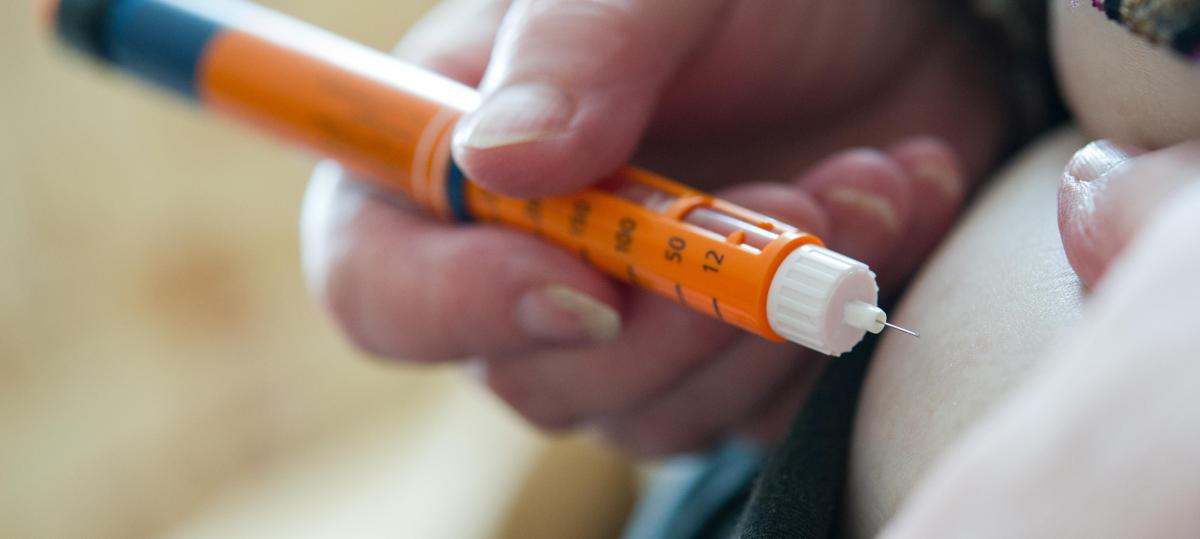What is that and how does it differ from type 1 and type 2?

diabetes Mellitus is one of the most widespread chronic diseases worldwide that influences the lives of millions of people. While most people with Type 1 diabetes or Type 2 are familiar, remains Type 3 diabetes Often a less well -known field, which, however, plays an important role in the spectrum of diabetes diseases. In this article, you can find out how type 3 diabetes differs from the other forms of diabetes and which diseases can cause it.
What is Type 3 diabetes?
As opposed to Type 1 diabetes And type 2 does not exist « one » type 3, because in fact the so -called type 3 includes a variety of diabetes forms that are from Type-1 and type 2 diabetes distinguish. The type includes specific conditions in which a diabetic metabolism is created by various causes that are not directly connected to the classic mechanisms of type 1 or type 2 diabetes.
Important: The classification and understanding of type 3 diabetes have developed over time. As, among other things, the German pharmacist newspaper reports, the term « type 3 diabetes » was used earlier to summarize these rare and other specific forms of diabetes. Today this term is no longer officially used in Germany, and instead these conditions are listed under « Secondary forms of diabetes » or « other diabetes types ».
What is the difference between type 1, 2 and 3 diabetes?
Type 1 and type 2 diabetes are the most common forms of diabetes, which differ significantly in their causes and treatment methods. Type 1 diabetes is an autoimmune disease in which the immune system attacks and destroys the insulin-producing cells of the pancreas Insulin deficiency leads. In contrast, type 2 diabetes is mainly through Insulin resistance characterized, in which the body cells no longer react effectively to insulin, often combined with a relative insulin deficiency. This shape is tight with Obesity and a seated lifestyle connected and makes loud diabinfo.de over 92 percent of all diabetes in Germany.
Type 3 diabetes, a lesser -known category, includes a variety of diabetes forms that are neither classified as type 1 nor type 2. This category includes conditions in which diabetes occurs as a result of other diseases. According to the German Diabetes Aid These include, for example, diseases of the pancreas, genetic defects of the beta cells or diseases of the hormone system.
What is summarized under type 3 or « other shapes »?
Type 3 diabetes can include many specific conditions, including loud diabinfo.de and diabetes.de:
1. Diseases of the pancreas
- Li): Relative List-None (&> Li): PL- (1.2EM) (&> Li): Marker: Text- (0) (&> Li): Relative (&> Li): Before: Absolute (&> Li): Before: W-3 (&> Li): Before: H-3 (&> Li): Before: BG-fire (& Li): Before: LEFT-0 (&> Li): Before: Top- (8px) (&> Li): Before: Rounded-Full My-5 « >
- Chronic pancreatitis
- Cystic fibrosis (cystic fibrosis)
- Hemochromatosis (iron storage disease)
2. Inheritance genetic defects of the beta cells
- Li): Relative List-None (&> Li): PL- (1.2EM) (&> Li): Marker: Text- (0) (&> Li): Relative (&> Li): Before: Absolute (&> Li): Before: W-3 (&> Li): Before: H-3 (&> Li): Before: BG-fire (& Li): Before: LEFT-0 (&> Li): Before: Top- (8px) (&> Li): Before: Rounded-Full My-5 « >
- Mody forms (Maturity Onset Diabetes of the Young)
3. Diseases of the hormone system
- Li): Relative List-None (&> Li): PL- (1.2EM) (&> Li): Marker: Text- (0) (&> Li): Relative (&> Li): Before: Absolute (&> Li): Before: W-3 (&> Li): Before: H-3 (&> Li): Before: BG-fire (& Li): Before: LEFT-0 (&> Li): Before: Top- (8px) (&> Li): Before: Rounded-Full My-5 « >
- Cushing syndrome (excessive formation of the hormone cortisol)
- Acromegaly (excessive formation of the growth hormone somatotropin)
- Phäochromocytom (hormonally active tumors, mostly from the adrenalmark)
4. Caused by therapy
- Li): Relative List-None (&> Li): PL- (1.2EM) (&> Li): Marker: Text- (0) (&> Li): Relative (&> Li): Before: Absolute (&> Li): Before: W-3 (&> Li): Before: H-3 (&> Li): Before: BG-fire (& Li): Before: LEFT-0 (&> Li): Before: Top- (8px) (&> Li): Before: Rounded-Full My-5 « >
- Corticoid therapy
- Neuroleptics
- Alpha interferon
- Pancreas surgery
5. Other genetic defects
- Li): Relative List-None (&> Li): PL- (1.2EM) (&> Li): Marker: Text- (0) (&> Li): Relative (&> Li): Before: Absolute (&> Li): Before: W-3 (&> Li): Before: H-3 (&> Li): Before: BG-fire (& Li): Before: LEFT-0 (&> Li): Before: Top- (8px) (&> Li): Before: Rounded-Full My-5 « >
- Defects of the insulin effect or the mitochondrial DNA
- Wolfram syndrome (rare neurodegenerative disease)
6. Rare Autoimmun conveyed forms of diabetes
- Li): Relative List-None (&> Li): PL- (1.2EM) (&> Li): Marker: Text- (0) (&> Li): Relative (&> Li): Before: Absolute (&> Li): Before: W-3 (&> Li): Before: H-3 (&> Li): Before: BG-fire (& Li): Before: LEFT-0 (&> Li): Before: Top- (8px) (&> Li): Before: Rounded-Full My-5 « >
- Stiff-person syndrome
- Anti-insulin receptor antibodies
How many people have Type 3 diabetes?
The diverse characteristics of type 3 diabetes already suggest that how many people in Germany suffer from this form of diabetes cannot be said. In Germany, the majority of diabetes cases type 2 diabetes, while type 1 diabetes, pregnancy diabetes and the rarer forms summarized under Type 3 make up the rest. Exact numbers for the rarer forms of diabetes, which are now referred to as « secondary forms of diabetes » or « other diabetes types », are not known, since such specific breakdown is hardly possible or not possible.
What symptoms do you have with type 3 diabetes and is it curable?
The symptoms of type 3 diabetes vary greatly because the disease can have different causes. In general, the Symptoms of that of type 1 and type 2 diabetes similar, including increased thirst, frequent urination, fatigue, Weight loss and blurred view. These symptoms arise due to the high blood sugar levels that are characteristic of all forms of diabetes. More specific symptoms depend on the underlying cause of the type 3 diabetes.
Also the Healability of this form of diabetes depends on the specific causes. In some cases, such as diabetes, which is caused by a reversible disease or a condition, for example by medication or treatable hormonal disorders, a successful treatment of the underlying cause lead to an improvement or remission of diabetes. In other, in particular genetic states or chronic diseases of the pancreas, the treatment can aim to manage the symptoms and improve blood sugar control, but complete healing is usually not possible.








